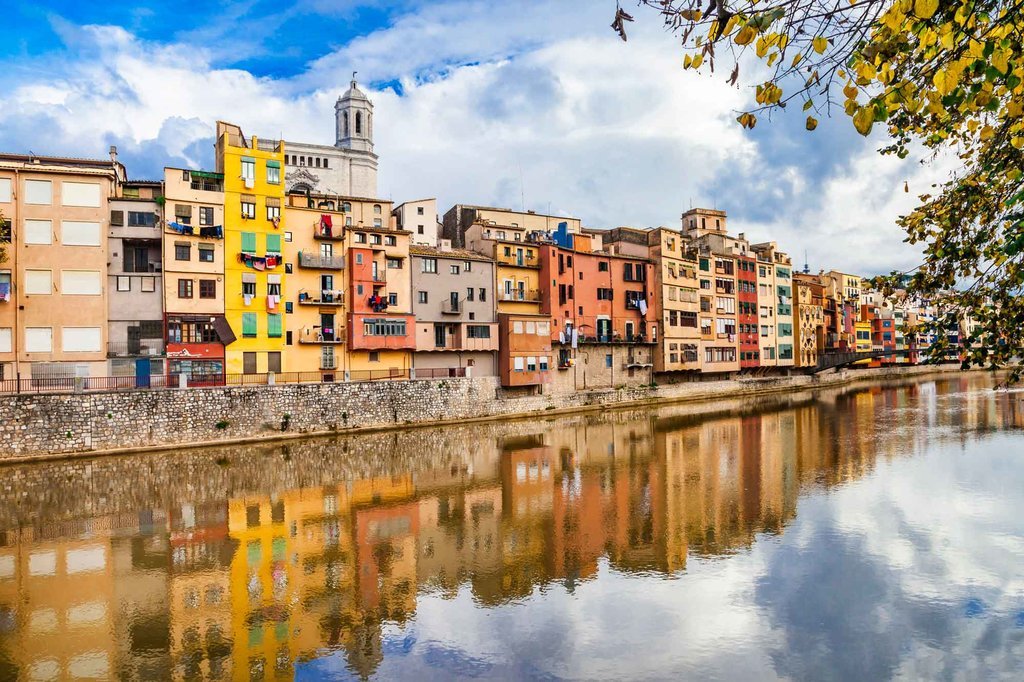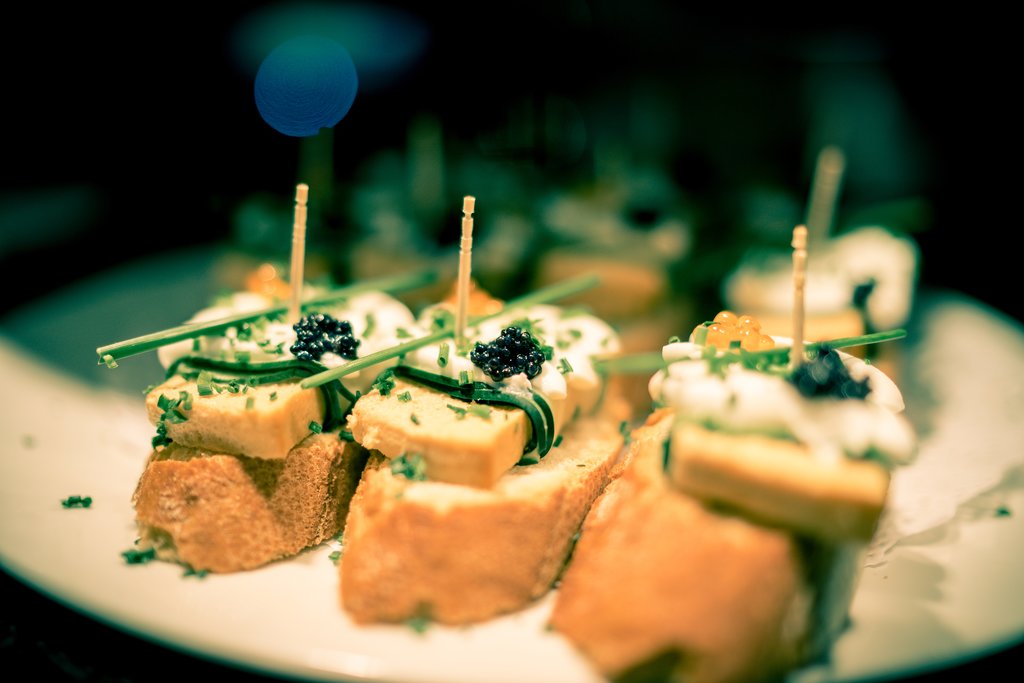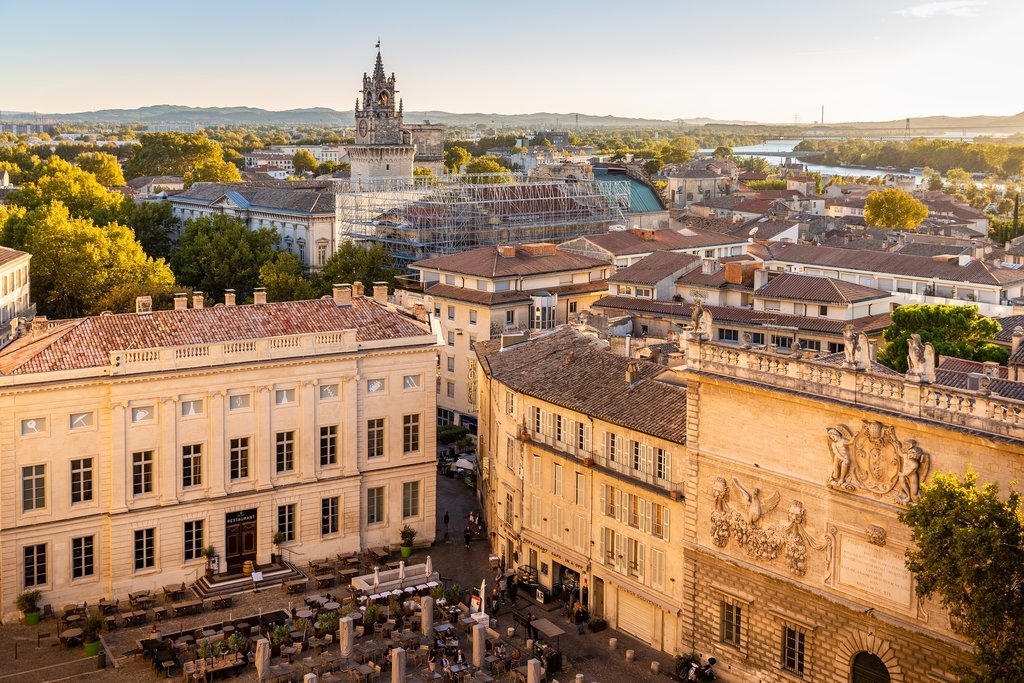
Spain and France Road Trip: Barcelona, Carcassonne, Aix-en-Provence, Lyon, & More - 12 Days

Highlights
- Stroll around Barcelona’s Magic Fountain of Montjuic at night
- Trace Salvador Dali’s path in Catalan
- Contemplate beauty & history in quiet medieval churches
- Browse markets in Aix-en-Provence
- Taste the best of Lyon’s cuisine
Brief Itinerary
| Day | Highlights | Overnight |
|---|---|---|
| Day 1 | Arrival in Barcelona & Self-Guided Afternoon Tour | Barcelona |
| Day 2 | Art Nouveau & Tapas in Barcelona | Barcelona |
| Day 3 | Guided Day Trip to Girona from Barcelona | Barcelona |
| Day 4 | A Day With Salvador Dali | Barcelona |
| Day 5 | Transfer from Barcelona to Carcassonne & City Tour | Carcassonne |
| Day 6 | Tour of the Cathar Castles | Carcassonne |
| Day 7 | Lastours Castles, Wine Tasting, & Canal du Midi | Carcassonne |
| Day 8 | Carcassone to Aix, Nîmes, Montpellier, & Avignon en Route | Aix en Provence |
| Day 9 | Hilltop Villages & Wine in the Luberon: Full Day Tour | Aix en Provence |
| Day 10 | Road Trip from Aix to Lyon via Napoleon Road | Lyon |
| Day 11 | Culinary Tour of Lyon | Lyon |
| Day 12 | Depart Lyon—Au Revoir, France! |
Detailed Itinerary
Day 1: Arrival in Barcelona & Self-Guided Afternoon Tour

Welcome to Spain! Upon arrival at Barcelona's El Prat Airport, a private driver will take you into the city where you can check into your hotel and unwind. You'll then have the afternoon free to explore on a self-guided tour.
We recommend first visiting Mt. Montjuic and the surrounding area. Montjuic is a famous hill that stands 1,988 feet (606 m) high and overlooks the Port of Barcelona. Take the Montjuic Cable Car from the metro station near Olympic Park, which takes you up to the 17th-century Castle Montjuic and offers panoramic views of the city. You can also access Montjuic via cable car from Barcelona Beach and by funicular elevator adjacent to the cable car.
The Poble Espanyol is also fun to visit. Constructed in 1929, this open-air museum features over 100 recreated buildings in the style of traditional Spanish villages. When the sun goes down over the city, make sure you're near the Magic Fountain of Montjuic, named for the dazzling display of water and colored lights that occur after dark. It's the best free show in the city, one with an effect heightened by the hundreds of spectators and a communal atmosphere.
Day 2: Art Nouveau & Tapas in Barcelona

After breakfast, make your own way to the meeting point for your tour. Your first stop today is the iconic Sagrada Família, the most visually impressive church in Barcelona. This Gothic/Art Nouveau basilica is another brainchild of Gaudí, and although construction began in 1882, it technically remains unfinished to this day. However, that didn't stop Sagrada Familia from earning UNESCO World Heritage status. It's a popular tourist draw but you'll be able to breeze right past the line with your prearranged tickets.
You'll then have the afternoon and evening to explore the cuisine of Barcelona with the help of an expert guide. The adventure kicks off at an old bodega turned tapas bar, where things have hardly changed since the 1930s. With a glass of the city’s favorite aperitif—sweet vermouth—in hand, you’ll enjoy a tasting of locally cured meats, cheeses, olives, and other Spanish delicacies.
Your foodie excursion continues with a stroll through Barcelona’s Gothic Quarter, during which your guide will point out sights of interest on the narrow medieval streets as they lead the way to the next eatery. This second tapas bar is a staple of Barcelona and a true local haunt. Although it only has a few dishes on the menu, they’re all excellent.
Afterward, head to another historic neighborhood where your guide will continue to reveal insight into the area's architecture, history, and culture. Eventually, you'll arrive at the third and final tapas bar. Pull up a seat, because it's time to indulge once more in traditional Catalan dishes paired with the region's globally renowned wine. Delicious must-try tapas include patatas bravas (fried potatoes with aioli), calamari, gambas (prawns), cured ham, croquettes, mussels, and chorizo.
And it wouldn't be dinner in Barcelona without something sweet to cap the meal. Be sure to save room for a traditional Spanish dessert, like crema Catalonia. This sweet custard is made with oranges and cinnamon and is Spain's answer to the classic creme brûlée.
Day 3: Guided Day Trip to Girona from Barcelona

The medieval city of Girona has historical roots in Christian, Jewish, and Muslim cultures. Today, you'll meet your guide at the Barcelona train station for the 30-minute trip to Girona, where you'll witness its history and architecture on a guided tour.
Start by exploring the influence of Muslim culture on the development of Girona with a visit to the 12th-century Moorish baths. See the exceptionally preserved central pool covered by a cupola, then navigate through the ruins of the Banys Àrabs. Make our way through the Jewish Quarter, which was home to nearly 150 Jewish families until their expulsion from Spain in 1492. Today it remains well preserved, containing a web of narrow medieval alleyways that wind through the ancient neighborhood. While navigating these serpentine streets, be on the lookout for mezuzahs, enclosed parchment attached to door frames that signify the faith of the occupants.
From here you'll climb up to the Basilica of Sant Feliu, a prominent structure nestled into Girona’s old city. Head into the interior of the basilica and discover a celebrated sculpture of a recumbent Christ by Spanish artist Aloy de Montbray, as well as 4th-century early Christian and pagan sarcophagi. Continue up the stoned pathways to arrive at la Catedral de Girona, an impressive structure that features the hallmarks of varying architectural styles. The cathedral is home to the sacred chapel of Narcism, the patron saint of Girona, and to the magnificent 11th-century Tapestry of the Creation, considered to be a true masterpiece of medieval artwork.
The rest of the day is free to explore on your own. Return to Barcelona in the evening.
Day 4: A Day With Salvador Dali

Today's full-day excursion is dedicated to Salvador Dalí. This is your chance to get to the heart of Catalan Mediterranean culture, architecture, traditions, and delicious cuisine.
At the designated time, your guide will meet you at your hotel for the trip to the northern border of Catalonia, where you'll explore where Dalí was born, raised, and later worked. You'll also discover the area's scenery, culture, and politic landscape, which helped shape and inspire this world-renowned artist.
From Barcelona, head to Figueres, a small town near the border of France and one of the three points forming the so-called 'Dalí triangle.' It's also Dalí 's hometown. Spend some time strolling along the streets and squares that defined the artist’s early years.
You'll also visit the Dalí Museum, the world's largest surrealistic object. Designed by Dalí himself upon the ruins of the old municipal theater, the surrealist museum gives visitors an unprecedented look into the artist's mind.
Continue along the Costa Brava coast to the village of Cadaqués. This village, famed for its dramatic landscapes framed by bright white homes and the Mediterranean Sea, is the easternmost town on the Iberian Peninsula.
Just a mile from Cadaqués lies Portlligat, where you'll end your tour. In 1930, Dalí, this tiny, charming cove for his home, building his house atop several fishermen's huts. Today it's been converted into the House Museum, which allows visitors to see Dali's studio and take an intimate tour of the home where Dali lived with his beloved wife and muse, Gala.
Return to Barcelona in the evening.
Chat with a local specialist who can help organize your trip.
Day 5: Transfer from Barcelona to Carcassonne & City Tour

In the morning, drive to Carcassone, a 4.5-hour train ride to the northwest. Check in to your hotel and pick up your rental car, then grab some lunch then head out for a private 3-hour tour of the city.
You'll see well-preserved military and religious architecture in one of Europe's most beautiful cities as you learn about the city's history from a passionate historical guide by your side. You'll be transported back to the Middle Ages, during a time when the city's defenses were used to keep its occupants safe from attack.
Tour one of Europe's most comprehensive and formidable defensive fortresses and see the city's 52 towers (35 internal walls and 17 external. As you walk through the fortress, let your imagination run wild as you picture boiling oil being poured on attacking armies. Walk down misleading stairs that sent enemy troops into a state of confusion and immerse yourself into the atmosphere of holy wars that raged in the city during the time of the Cathars.
Day 6: Tour of the Cathar Castles

Today's nine-hour tour includes two of the most intriguing Cathar castles—Queribus and Peyrepertuse. Start at Quéribus Castle, also known as Citadelle du Vertige, which, as its name suggests, perches on the edge of an impossibly steep cliff. During the time of the Cathar Crusade, the castle served as a shelter to the Cathars. In fact, it's often regarded as the last Cathar stronghold.
Stop for lunch in the storybook town of Cucugnan, then spend some time strolling the streets. Pause by the windmill and take in the views of the surrounding vineyards.
In the afternoon, continue to Peyrepertuse Castle, a ruined fortress. In former times, it was associated with the Counts of Barcelona, and later the Kings of Aragon. Its name is derived from Peirapertusa, the Occitan word meaning 'pierced rock'—fitting for a castle that juts sharply into the sky.
Day 7: Lastours Castles, Wine Tasting, & Canal du Midi

In the morning, head out for the first stop on your full-day tour—the Lastours Castles. The ruined castles sit on a rocky spur, high above the village of Lastours, surrounded by the deep valleys of the Orbiel and Grésilhou Rivers.
From here, continue to a small vineyard for a wine tasting before lunch. Meet with winegrowers and oenologists and learn about their different production methods while you sample excellent local wines. For lunch, sit down at a typical French restaurant for a taste of local specialties.
In the afternoon, make the one-hour drive to the beautiful village of Minerve, classified as one of the "Most Beautiful Villages of France." Stroll through the fortified medieval village, which perches high on a rocky outcropping high above the barren Languedoc landscape.
On the drive back to Carcassone, stop by the 350-year-old Canal du Midi for a walk along the water. The canal, a UNESCO site, is still considered an engineering marvel.
Day 8: Carcassone to Aix, Nîmes, Montpellier, & Avignon en Route

Spend the day driving from Carcassone to Aix en Provence, a three-hour drive if you don't make any stops.
Along the way, stop in Nîmes to explore Roman history and heritage in the region. The city has a robust Roman past, with plenty of ruins: the amphitheater, the Maison Carrée (Square House, one of the best-preserved Roman temples), and Augustus' Gate.
In the afternoon, stop by Avignon to explore this medieval city that housed the Pope in the 14th century. While here you can visit the soaring Palais des Papes—the largest Gothic palace in history and now a UNESCO World Heritage Site. A tour of the palace, which includes the popes' private apartments with their fabulous frescoes, is a must.
You'll also have time to explore the city's pretty squares and the medieval bridge along the Rhone River. Head to Place de l'Horlog, the city's historic heart, to see the City Hall, the 15th-century belfry, the theater, and the still-functioning Belle Époque style carousel. During the 1st century BCE, the plaza was used as Avenio's (then-Avignon) by the Romans as a forum. It's a great place to sit at a cafe and spend the afternoon people watching and enjoying various street performers.
Continue to Aix-en-Provence in the evening.
Day 9: Hilltop Villages & Wine in the Luberon: Full Day Tour

In the morning, embark for the surrounding Luberon Region, an area known for its countryside vineyards, orchards, and postcard-worthy hilltop villages.
Travel at a leisurely pace as your guide takes you to the village of l'Isle Sur la Sorgue, famous for its outdoor weekend markets, antique stores, and old wooden waterwheels churning over the Sorgue River, which bisects the town. There are few better spots to enjoy a relaxing lunch than here in town, which is precisely what you'll do.
After eating, head to Gordes. This is arguably the most beautiful of all the hilltop villages in the Luberon. Its fortified castle dominates the skyline of Gordes, and from its winding cobbled streets, you can look out to wide views over the valley and surrounding hills. From Gordes, it's just a few kilometers to the Abbey of Notre-Dame de Sénanque, a Cistercian abbey founded in the 12th century. Nearby is the village of Roussillon, famous for its colorful ochre. Hike on the Ochre Trail to a former quarry before heading to another hilltop village, Bonnieux. This village, like many in the area, dates back to Roman times. Nearby, a forest of cedar trees that were imported from North Africa during the Napoleonic era covers the hillsides.
Drive to Lacoste for panoramic photo stops, then head to Menerbes—your last stop of the day. It's famous thanks to the author Peter Mayle, who chronicled his year in the south of France in his book "A Year in Provence." End the day with wine tasting at a local winery before returning to Aix en Provence for the night.
Day 10: Road Trip from Aix to Lyon via Napoleon Road

Drive to Lyon along the Napoleon Road, a 4-hour drive from Aix to Grenoble if you don't stop. There's plenty to do and see along the way, however, so expect to spend the entire day on the road seeing the region.
The Route Napoleon is a 202 mile (325 km) stretch of paved road—also known as the Route Nationale 85—which winds through the mountains of Provence. It follows the route taken by Napoleon during his 1815 escape from Elba to Grenoble and is marked by the sign of the brown eagle on the roadside.
Aside from the scenery, the road itself is quite pleasant to drive, with cambered corners and great views. Unlike the heart-stopping mountain passes, this route was designed for speed and efficiency. As you drive along the route, explore the small towns and locations where Napoleon stopped along the way (including the castle near Malija, where Napoleon spent a night.) After passing through here, the route goes over Col Bayard (4,100 ft/ 1,250 m) to Corps. Further north list La Mur, before stretching to your final destination—Grenoble.
Once you arrive in Grenoble, take the highway to Lyon (1.5 hours away)—or stay in Grenoble for a pre-dinner stroll around the lake.
Day 11: Culinary Tour of Lyon

In the morning, enjoy a private gourmet food tour of Lyon. You'll explore stops from the Old Town to the iconic Halles Paul Bocuse as you pass through the Presque Ile. Learn about the city's history and its gastronomy as you visit unique neighborhoods and taste the city's best culinary offerings: cheeses, charcuteries, pink pralines, and more.
The afternoon is free to explore the city. Start at the gothic Saint-Jean Cathedral to discover a cobblestone labyrinth of courtyards, passageways, gothic staircases, and Italian galleries.
For dinner, choose from hundreds of restaurants, from family-owned restaurants serving traditional Lyonnaise cuisine, informal brasseries, to Michelin-starred restaurants like the iconic Auberge de Collonges, founded by the famous chef Paul Bocuse.
Day 12: Depart Lyon—Au Revoir, France!

After breakfast, take a private car or train transfer to the Lyon-Saint Exupéry Airport to catch your flight home. A bientôt!
Map
